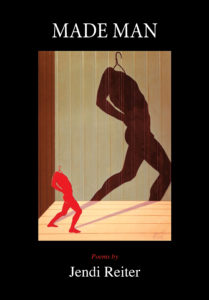They’re trying to kill us, and cis people still want to quiz me about gender theory.
Dear cisgender friends and allies: I’m glad you value our relationship enough to be honest about what’s challenging for you. I’m glad you see that I’ve changed significantly in the past four years. If gender matters to me, of course it’ll matter to you too. You’re going to relate to me differently as a gay man than as a woman. (Let’s simplify my identity for purposes of this discussion.) I like being “out,” and until recently, I haven’t minded educating you about it. In the beginning, it actually felt more awkward to avoid talking about one of the main projects in my life. What’s new, Jendi? “Oh, you know, the usual, I’ve been busy growing my leg hair and studying witchcraft.”
But there comes a time–and that time is now–when I need you to ask me different questions. Such as: How am I coping with the terrifying wave of transphobic state legislation and eliminationist rhetoric from mainstream political pundits? Am I worried about losing access to gender-affirming healthcare? Do I need emotional or material support, for myself or less privileged members of my trans community? What can YOU do to help?
Nobody’s asked me this. I don’t know, do I seem too happy? Are blue-state liberals assuming that Massachusetts and New York will remain untouched by the national-level bans that Republicans are itching to impose? We can’t afford this complacency. Look at what’s happening with abortion in the lead-up to the likely overturning of Roe v. Wade. Conservative states and cities are attempting to criminalize abortions that occur outside their geographic jurisdiction, and we can’t expect the current Supreme Court majority to care about this plainly unconstitutional restriction on the right to travel.
Abortion is a good analogy because I’ve always had a visceral and moral discomfort with it, rooted in personal trauma as much as philosophy–perhaps the same way J.K. Rowling feels about trans women! My narcissistic mother wasn’t convinced of my independent personhood after I was born. She literally said to me when I was 30 years old, “I had three abortions, I could’ve had a fourth!” because she was mad that I wanted to meet my father. So it always frightened me that pregnant people would get to decide whether their fetus was a human with rights.
But who cares how I feel? Seriously. It doesn’t matter. The issue is not whether abortion, or transition, is a good decision that someone is always making for the right reasons, with no regrets, and no better alternatives. The issue is, who is best equipped to make that decision? The person living in that body, or the state? And beyond that, do we want to live under a regime that has that much power over our intimate lives?
So, friends: Stop asking for the perfect definition of womanhood that includes you and Laverne Cox but not Elliot Page. (Who wouldn’t want top surgery after seeing that torso? DAMN.) Start asking whether this question is so important, that it justifies subjecting schoolchildren to genital inspections if anyone makes an unsubstantiated claim that the young athlete is trans. Here’s Reason Magazine–hardly a liberal rag–on this Ohio law that passed last week:
The “Save Women’s Sports Act” bans schools and colleges in Ohio from permitting “individuals of the male sex” from participating in women’s sports. It covers any school that participates in organized interscholastic athletic conferences, meaning it covers private schools that compete against state-funded schools as well.
The bill does not explain what the “male sex” or “female sex” is. It does not say “trans” or “transgender” anywhere in the bill. It doesn’t talk about birth or biological sex.
What it does instead is give people the power to dispute the sex of an individual athlete. Then it falls upon that athlete to prove their sex by going to a physician and getting a signed statement confirming the athlete’s sex based on only the following:
“The participant’s internal and external reproductive anatomy;”
“The participant’s normal endogenously produced levels of testosterone;”
“An analysis of the participant’s genetic makeup.”
The bill does not specify who has the authority to levy such challenges, but it does authorize individuals or schools “who [are] deprived of an athletic opportunity or suffers a direct or indirect harm as a result of a violation of this section” to sue the school, school district, or conference who allowed the trans woman to play and be awarded damages.
The article notes that Idaho passed a similar law in 2020.
Stop asking me whether all these minority gender identities are splitting “the movement”. You don’t think they’re coming for you next? Bans on trans healthcare, or even abortion, aren’t the endgame. All in all, it’s just another brick in the wall of the evangelical-authoritarian state. One party in the United States has gone full fascist and you’re still acting like we can appease our abuser with the perfect argument or self-effacing compromise.
You don’t have to agree with every decision we make, or see yourself in us, to understand that we’re in the same struggle. What are you going to do about it?

